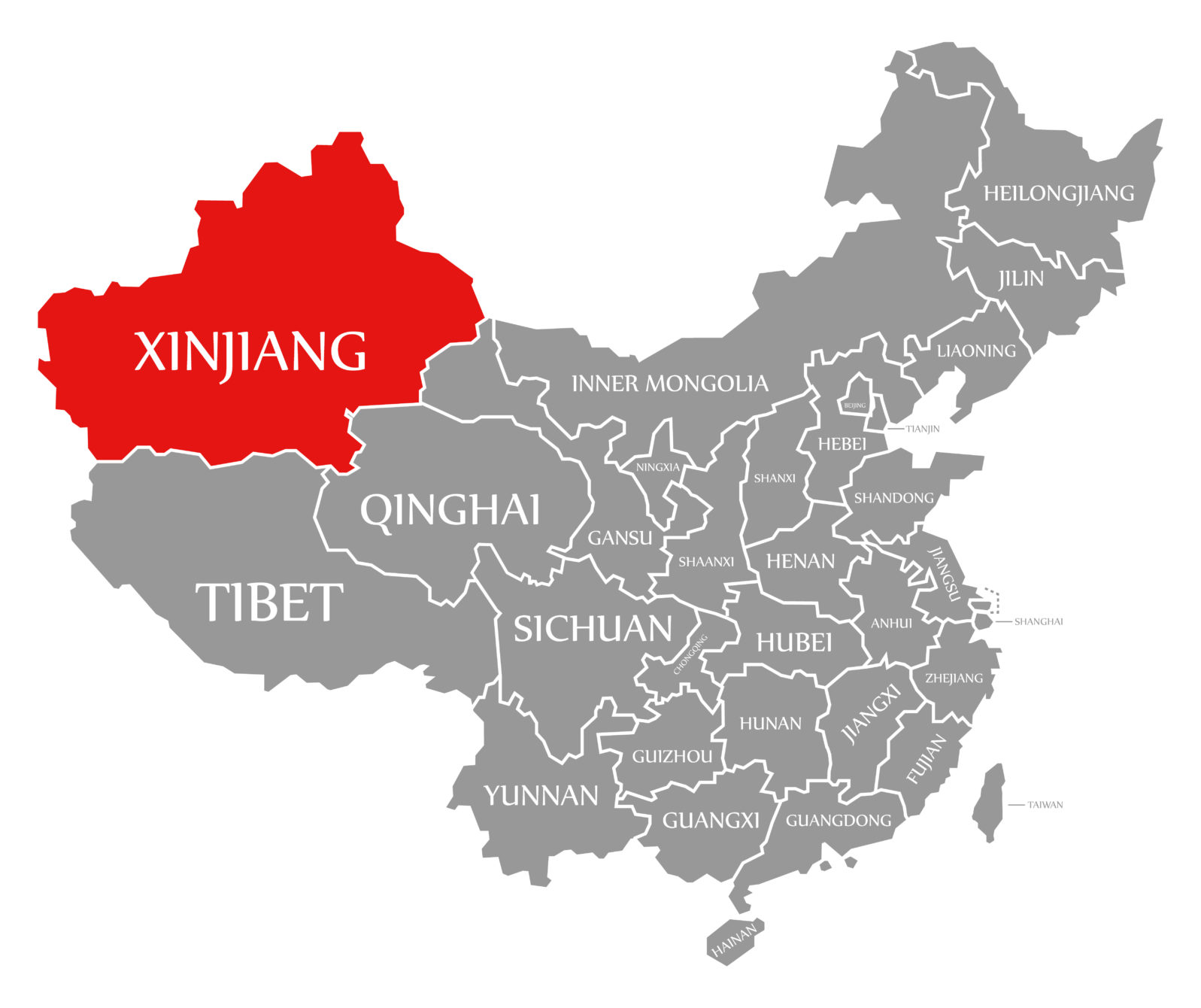In China, Forced Uyghur Labor Produces Many Fashionable Products
Industries such as fashion and solar panels rely heavily on supplies from detention centers and concentration camps in ChinaChina has been called the “world’s factory.” American companies like Apple, may assemble their tech in the U.S., but the parts are made elsewhere, including Xinjiang, China (Xinjiang Uyghur Autonomous Region). Industries such as fashion and solar panels also rely heavily on Xinjiang for their supply lines. Reports from the Australian Strategic Policy Institute (ASPI) and the Center for Strategic and International Studies in the U.S., as well as testimonials from Uyghurs, show that many such factories in Xinjiang involve the forced labor of Uyghurs in what are called “vocational training schools.”
These vocational training schools are more appropriately described as detention centers. In many cases, they are essentially concentration camps. Many Uyghurs are also sent from Xinjiang to other parts of China to work in factories for 12-15 hours per day with little pay. The ASPI report says this is part of a larger effort to dilute and disperse the Uyghur population in Xinjiang.

Based on search engine analytics, after 2014 when Xi Jinping announced his “strike hard campaign against violent extremism,” there was an increase in advertising the buying and selling of Uyghurs, which increased substantially in 2017 when Uyghurs were being placed in “re-education centers” or “vocational training schools.” These advertisements included deals involving “government-sponsored Uyghur labor.” [ASPI]
Placing official sanctions on products produced by force labor requires substantial proof and China has made it increasingly difficult to audit supply lines or gain any access to Uyghurs’ working conditions in Xinjiang. Amy Lehr, director of the human rights program at the Center for Strategic and International Studies in Washington, DC, told BuzzFeed News,
It’s almost impossible to confidently assess the labor conditions in Xinjiang just because it’s almost impossible to get a competent assessor into the region. And then their ability to interview workers, especially Uighur workers, is limited because of the surveillance.
Megha Rajagopalan and Alison Killing, “US Solar Companies Rely on Materials from Xinjiang, Where Forced Labor Is Rampant” at Buzzfeed (January 14, 2021)
BuzzFeed’s Megha Rajagopalan and Alison Killing, who have conducted several investigations of Xinjiang’s detention centers using detailed satellite data, found at least 135 compounds where detention centers were located next to factories.
Senior policy analyst Olivia Enos with The Heritage Society reports that satellite imagery confirms that “170 of the 260 known political reeducation camps have shared facilities with factories, where the detainees are no doubt forced to work.”
The Fashion Industry’s Links to Force labor
In an interview with fashion magazine WWD, author and journalist Amelia Pang talks about the fashion industry’s reliance on Xinjiang. Her interview comes after the U.S. banned the import of cotton products produced in Xinjiang. Pang’s book, Made in China: A Prisoner, an SOS Letter, and the Hidden Cost of America’s Cheap Goods (2021) begins with the story of a mother unpacking unopened Halloween decorations that a relative bought from Kmart two years prior. Inside the package was a letter that read,
If you occasionally buy this product, please kindly resend this letter to the World Human Rights Organization. Thousands people here who are under the persicuton[sic] of the Chinese Communist Party Government will thank and remember you forever.
The writer was a Falun Gong practitioner who had been tortured, beaten, and forced to work fifteen hours per day, seven days per week for little to no money in 2010. The Falun Gong had been persecuted by the Chinese government since the 1990s. Now the Uyghurs are also part of China’s forced labor economy.
In the WWD interview, Pang says that Xinjiang produces 20% of the world’s cotton, which is why many clothing manufactures have subcontractors in Xinjiang. Additionally, she contends that the crackdown on Uyghurs in Xinjiang has less to do with terrorism and extremism and more to do with protecting a major trade route in China’s Belt and Road Initiative, a theory with which that other China watchers concur:
Xinjiang happens to be the center of China’s Belt and Road initiative, which is a trillion-dollar investment. It’s a big trade route that connects China with 60 some-odd countries. The Chinese Communist Party is very afraid of a Uighur uprising messing with that potentially…
Tiffany Ap, “‘Made in China’ Book Spotlights Uyghur Forced Labor Supply Chain” at WWD (January 27, 2021)
The ASPI report names several popular clothing brands that they determined have supply chain connections to Xinjiang: Abercrombie & Fitch, Nike, Adidas, Calvin Klein, Fila, Gap, H&M, L.L. Bean, Lacoste, Ralph Lauren, Tommy Hilfiger, and Victoria’s Secret.
The Solar Panel Industry’s Links to Forced Labor
The CCP maintains that the vocational training schools are to curb extremism and terrorism among the Uyghurs who are predominantly Muslim.
Many global solar power companies rely on polysilicon made in Xinjiang. Polysilicon, the conductive layer of the solar panel, is expensive to produce.To conduct electricity efficiently, it must be purified via caustic chemicals and heating to 1000°C. Forty percent of the operating costs go into heating the polysilicon, which requires electricity. In China the cheapest source of electricity is in Xinjiang where coal is abundant. Analysts say the cost of electricity in Xinjiang is as low as 0.22 yuan ($0.03) per kilowatt hour. The average cost, by contrast, is 0.6 to 0.7 yuan in central China. Alternatives to polysilicon tend to be more expensive.
Bloomberg reports that on February 4, 2021, 175 global solar panel companies signed a pledge originating with the U.S. Solar Energy Industries Association to avoid forced labor in their supply chains:
The move sheds light on a dirty secret of the solar industry: it relies on Xinjiang and its cheap coal power to produce half of its key raw material. And with demand for panels set to explode as the U.S. and China commit to more clean power, it will be even harder for the industry to quit the troubled region.
Dan Murtaugh, “Why It’s So Hard for the Solar Industry to Quit Xinjiang” at Bloomberg (February 10, 2021)
This will greatly affect the industry and may mean loss of legitimate jobs in Xinjiang as well.
Yes, Even Bitcoin Is Part of the Problem
The best-known cryptocurrency, Bitcoin, has its own supply chain problems with Xinjiang. Cryptocurrencies require “mining” but not in the physical sense, like mining for coal. Mining for bitcoin means hosting a server that provides the computing power necessary to maintain a blockchain. Blockchain decentralizes virtual transactions by recording them on multiple servers so that they cannot, in theory, be doctored or changed.

The massive computing power blockchain needs is where Xinjiang, and its cheap fossil fuels come in:
In cryptocurrency mining, people use enormous power-hungry computers to solve algorithmic puzzles and in return get rewarded with new bitcoin. That makes cheap energy integral to bitcoin. As of April last year, around 65% of bitcoin mining capacity, or hashrate, was based in China due to its cheap electricity.
Xinjiang, which has vast coal resources, accounted for over half, or 36%, of this computational power in the country, according to the Cambridge Bitcoin Electricity Consumption Index, an online tool developed by the British university.
Jane Li, “Bitcoin has a Xinjiang problem” at Yahoo Finance
Ironically, Bitcoin, like all cryptocurrencies, is illegal in China, which has recently cracked down on its fintech sector. But mining for Bitcoin is technically legal. The situation may become fluid, however, especially because China is developing its own blockchain currency.
A Global Response to Forced Labor
Many countries are becoming less tolerant of China’s treatment of its minority groups. The U.S., Canada, and The Netherlands have all accused the Chinese government of genocide and crimes against humanity. In September 2020, the U.S. House of Representative passed the Uyghur Forced Labor Prevention Act, which would ban goods imported from Xinjiang to prevent using forced labor in American company supply lines. The bill is currently in committee in the Senate. Last January (2021) the U.S. Customs and Border Protection issued a Withhold Release Order against cotton products and tomato products from Xinjiang “based on information that reasonably indicates the use of detainee or prison labor and situations of forced labor.”
Recently, the Norwegian Wealth Fund, the world’s largest sovereign wealth fund that owns approximately 1.5% of the world’s listed shares from 9,100 companies, has expressed concern about its companies’ supply line connections to Xinjiang and plans to investigate.
And just this week, an independent report by a non-government organization, Newlines Institute, that was produced with the help from dozens of experts on international law, genocide studies, Chinese ethnic policies, and the region, found that the Chinese government’s actions in Xinjiang have violated every provision of the United Nations 1948 Genocide Convention. Some of the scholars that contributed to the report have been threatened by Beijing. Which, given the other circumstances, implies that they are onto something.
Further reading:
CSIS Report “Connecting the Dots in Xinjiang: Forced Labor, Forced Assimilation, and Western Supply Chains” (October 16, 2019)
ASPI Report “Uyghurs for Sale” (March 1, 2020)
Newlines Institute for Strategy and Policy “The Uyghur Genocide: An Examination of China’s Breaches of the 1948 Genocide Convention” (March 2021)
